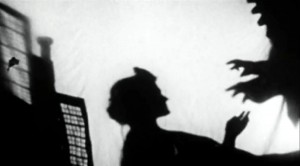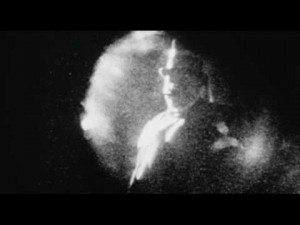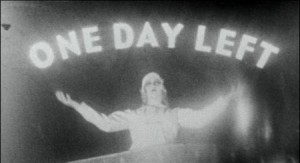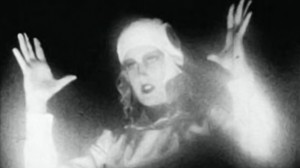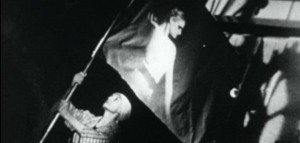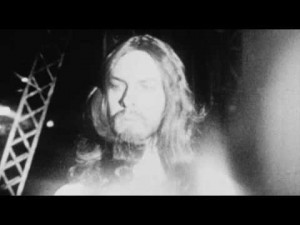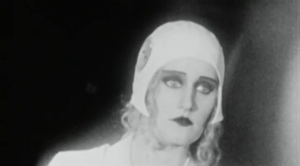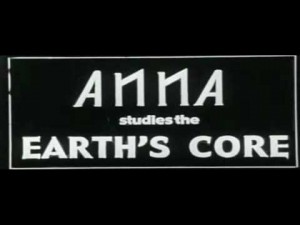The Heart of the World****
Directed and written by Guy Maddin
With Leslie Bais, Caelum Vatnsdal, Shaun Balbar, and Hryhory Yulyanovitch Klymkyiev.
It lasts only about seven minutes, making it roughly comparable in length to a Bugs Bunny cartoon, but Guy Maddin’s The Heart of the World — which opens this week at Landmark’s Century Centre with The Last Resort — conjures up a universe so vast and wacky that anyone can get lost in it. Like any film released in February, it has a very poor chance of getting an Oscar, because the Academy Awards nominators — who know better than anyone how such honors are designed to sell more than evaluate — don’t want to consider many candidates released before Thanksgiving. But for my money it’s better than any of the current best-feature nominees. It has more action and is quite a bit funnier. I’d even call it inexhaustible.
Maddin’s movie premiered last September at the Toronto film festival, which had commissioned it as one of several “preludes” by leading Canadian filmmakers to run unannounced before the features, a series designed to celebrate the festival’s 25th anniversary. It was commonly regarded as the best film shown at this gala event, though I’m not sure I’d go quite that far. Jia Zhang-ke’s Platform, which might be the greatest film ever to come out of mainland China, surely has an edge over it. Yet I was delighted to join my colleagues in the National Society of Film Critics in selecting this pocket masterpiece as the best experimental film of 2000.
It’s not an experimental film in any normal sense — unless one thinks of Jack Smith’s Flaming Creatures, a work with which it has a few unexpected glancing affinities. But then there’s nothing remotely normal about any of the Maddin films I’ve seen, all of which were made in Winnipeg and appear to have penetrating if indirect things to say about Canada, allegorically or otherwise. Tales From the Gimli Hospital (1988), his first feature, looks Nordic, surrealistic, and (deceptively) like early David Lynch, at least in its handling of gore. Archangel (1990), stranger and better, has something to do with amnesiac victims of mustard gas during World War I and the Russian Revolution. Careful (1992) is his first color film and uses subdued pastels and tinting; it’s set in a remote Alpine village seething with incest where everyone speaks in whispers to avoid setting off avalanches, and it’s plainly the most hilarious movie ever made about Canadian repression. Twilight of the Ice Nymphs (1997), in more conventional color, was the first Maddin feature to disappoint me, despite the presence of Shelley Duvall and Frank Gorshin, an ostrich ranch, and a classic Maddin-esque romantic triangle. There are also early Maddin shorts — the frequently unreliable Internet Movie Database lists 11 titles, some of which may be imaginary — of which I’ve seen only the relatively minor The Dead Father (1986) and Odilon Redon (1995).
All of these features, especially the first three, bear some visible or audible relation to the textures and rhythms of late silent movies and early talkies, and The Heart of the World blatantly displays the same fascination, harking back to Russian silents of the 20s, though some of the (unobtrusive) sound effects belong mainly to other countries and the early 30s. (New York programmer Mark McElhatten also plausibly cites as a possible source Koko’s Earth Control, a silent cartoon by the Fleischer brothers.) But a closer look at The Heart of the World reveals that what’s being evoked isn’t so much those black-and-white movies — certainly not when they were released and first seen — as it is the experience of seeing them today in scratched, duped, and jumpy prints, looking and sounding as if they’d been filtered through layers of gauze, jerking forward in hiccups past missing frames. “Looking” may be the operative term here considering that the opening shot, which recurs in variant forms, is of a single eye peeping out at us; whether this is intended to be a mirror reflection of our own gaze or someone else’s voyeurism is one of the film’s enduring mysteries.
The driving, pounding momentum of the piano, percussion, and orchestra accompaniment helps foster the impression of a silent-movie screening. The title also calls to mind D.W. Griffith’s Hearts of the World (1918) — a propaganda effort that had been intended to persuade America to enter World War I — though a likelier, if still remote, silent model would be a futurist Soviet space opera made six years later, Yakov Protazanov’s Aelita, which anticipates Metropolis in a few particulars. The characters all have Russian names, and another Russian detail –more self-referential than anything else in the movie — is the intertitle “kino,” the Russian word for “film,” repeated as a kind of punchy punctuation at least six times in the closing stretches. (Responding to this aggressiveness, Mike Rubin aptly noted in the Village Voice, “I could watch this film every morning as a substitute for coffee.”)
Maddin’s opus is set exclusively on earth, though as its title suggests, part of the action transpires underground. Phallic objects abound, including a long telescope, a strange rocket launcher or cannon equipped with balls, and a narrow tunnel leading to the earth’s center, down which the heroine falls, much as Lewis Carroll’s Alice falls down the rabbit hole.
The writer-director-cinematographer-coeditor’s squib on this film, characteristically arch and serious at the same time, bears quoting in full, even if he gets the running time wrong: “I’m sorry! I’ve abused this Prelude — turned it into a soapbox for my tireless campaign to redeem melodrama. Without anyone suspecting a thing, I’ve jammed tiny, microscopically fleeting plot twists between the images of my ostensible movie presentation, deviously submerging in this way an entire feature film, all in a mere five minutes — the world’s first subliminal melodrama! Please watch carefully.”
“Microscopically fleeting” says it all — explaining even why the overall impression of this film as a mocking pastiche of Russian “cine-fist” strategies often isn’t sustained by the eclecticism of the framing and cutting. Maybe the “now you see it, now you don’t” tactics contained in the scattershot editing and wildly darting and divergent camera movements conjure up one of the basic organizational principles of the Russian silents, from Kuleshov to Pudovkin to Eisenstein to Vertov — the idea that rapid notations and surreal juxtapositions oblige spectators to fill in the blanks. Yet Maddin’s arrangement of images and movements may be even more abstract than the Russian montage sequences that inspired him: some intertitles move across the screen or grow larger or get combined with images, and brief bursts of animation are devoted to abstruse mathematical formulas and diagrams of the globe. The net result appears to have less to do with a consistent style or content than with the overall effect such procedures have on one’s melodramatic imagination. But because this is a thinking person’s postmodernism, the surface effects and their teasing allegorical implications remain in the forefront.
Intertitles punctuating introductory portraits of the main characters in oval cameos — a device familiar from serials made in the teens — introduce us to two brothers, Nikolai (“youth, mortician”) and Osip (“an actor playing Christ in the Passion Play”). These characters quickly become (I’m using slash marks to indicate divisions between shots or sequences) “two brothers” / “two brothers who love…” / “who love” / “the same…” / “brothers love the same…” / “woman.” Moreover, we discover that “Anna, state scientist,” who completes this particular Maddin-esque romantic triangle, “loves BOTH brothers” and “studies THE EARTH’S CORE,” / “the VERY heart of the world” — until she discovers, several shots later, that “the world is dying of heart failure!” Still unable to choose between the brothers, she swoons melodramatically in the presence of a newly arrived “dark horse,” “Akmatov, the industrialist” — a fat cigar smoker equipped with pince-nez and moneybags who fetishistically fingers coins and who apparently provokes “the World’s Fatal Heart Attack!” once he has the unconscious Anna in his clutches.
Each of the above intertitles is separated from the next by rapid montages — brief shots sprayed at the viewer like bullets — that has provoked some commentators to think of Eisenstein. But in spite of Akmatov, who could have stepped straight out of Strike or October, no Eisenstein movie ever displayed the stuttering syntax of Maddin’s intertitles as they lurch drunkenly through a single sentence or the chaotic discontinuities of his flashy camera movements and cuts, which often become a form of gibberish. This jumble of effects suggests Eisenstein only because the shots hurtle by without leaving us time to think or pause for breath; look at the film more closely, as I was able to do because I had a video copy, and you discover how the film’s breathing overtakes ours. It’s quickly apparent that Maddin’s splintered allegorical narrative and diverse spastic effects follow obscure laws that are entirely their own.
This is a film we have to chase after, but no matter how many times we view it we can never catch up. It will probably hold as many mysteries the 12th time you see it as the first — making it more prizeworthy than any number of conventional and conventionally racist and xenophobic drug thrillers (which blame contemporary drug problems on Mexicans and blacks rather than on, say, governments, including onetime presidents and CIA directors). As for what this film is “really” about, maybe I’ll have a better idea after I’ve seen it 20 times. An apocalyptic, millennial statement about the death of cinema (signaled at the end by the word “kino” and the sound of a film projector slowing and stopping) and of the environment (suggested by the plunges beneath the earth’s surface) is one possibility, and I’m sure there are others, most of them funnier.

